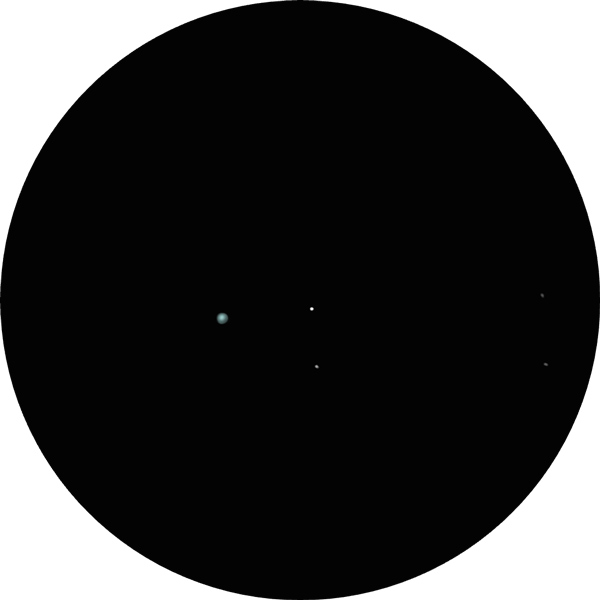In the constellation of Ophiuchus lies NGC 6572, a quaint planetary nebula. This green-blue orb enjoyed on summer nights has several endearing nicknames, such as the Emerald Nebula, Green Nebula, and Turquoise Orb. While this planetary is reasonably bright, around magnitude +8, it is also relatively small. Backyard observers will need at least a small telescope, preferably with an OIII filter, to see this beautiful tiny spot.
Planetary nebulae are formed when a dying star expels its outer layers into space in the late stages of its evolution. The intense radiation from the exposed core of the star ionizes the ejected gas, causing it to glow and form a beautiful, glowing shell. At only a few thousand years old, NGC 6572 just started to release its gases. That’s why it’s more of a tight, small ball compared to others that are spread out and dimmer.1
The German astronomer Friedrich Georg Wilhelm von Struve discovered this summer orb in 1825. As with other planetary nebulas, NGC 6572 looks like a small greenish planet in the telescope, much like Uranus or Neptune. See my observations below for more details.
My Observations
| Date | July 15, 2023 |
| Time | 11:33 p.m. |
| Location | Seattle, WA |
| Magnification | 169x |
| Scope | Meade 8″ SCT |
| Eyepiece | 12mm |
| Seeing | Above Average |
| Transparency | Above Average |

Before shutting down the scope for the night, I’ve decided to leave IC 4756 behind and slew the telescope over to the Raquetball Nebula. I’m leaving my 25mm eyepiece in to see if it helps isolate a fuzzy star in the mix.
At this point, I can make out a few stars, with one that appears dimmer and perhaps slightly fuzzier. After fumbling through my box of filters, I’ve screwed on the Oxygen III filter to my 12mm.
There it is—I see a bluish orb that radiates out compared to the nearby star in the eyepiece. This is clearly not a star. The sphere is a small yet illuminating teal ball. It reminds me somewhat of NGC 6210 in Hercules and perhaps the Saturn Nebula, but it’s not as striking as the Blue Snowball.
As I finish the sketch, I’m grateful I stayed a few minutes longer to visit this quaint summertime orb.
Key Stats
| Constellation | Ophiuchus |
| Best Viewing | Summer |
| Visual Magnitude | +8.1 |
| Absolute Magnitude | -1.5 |
| Distance from Earth | 2,600 ly |
| Diameter | .2 ly |
| Apparent Size | .3 x .2 arcmin |
| My Viewing Grade | B |
| Designations | NGC 6356, Emerald Nebula, Green Nebula, and Turquoise Orb, ARO 7, W159. |
Sources
Banner photo of NGC 6356 by Azuma Ayu and licensed under the Creative Commons Attribution-Share Alike 4.0 International license. Source info.
1 Information@eso.org. (n.d.). A dazzling planetary nebula. http://www.spacetelescope.org. https://esahubble.org/images/potw1034a/
Sketches by Wayne McGraw

One thought on “NGC 6572: Blue Racquetball Plantary Nebula in Ophiuchus”